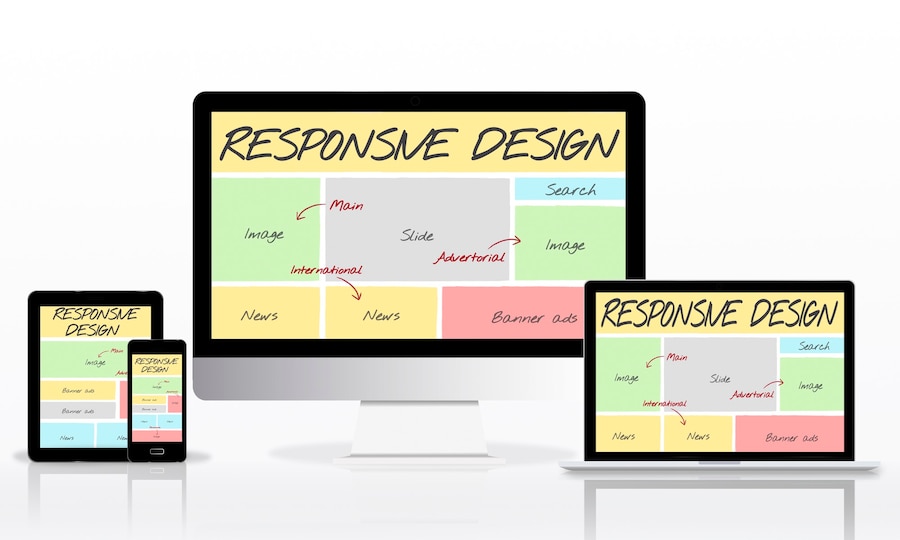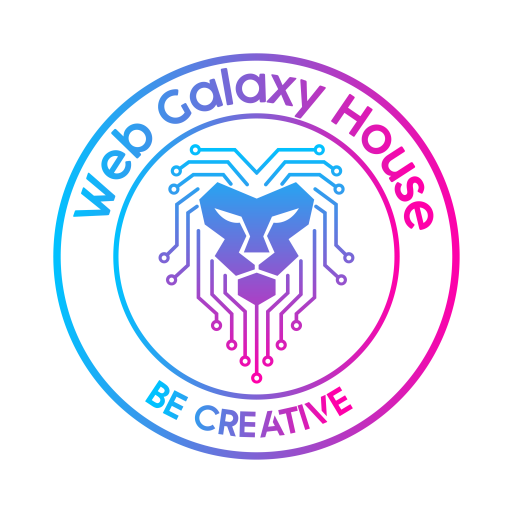Web Development Unlocked: everything You Need to Know to Succeed
Web development is the art and science of creating websites and web applications that live on the internet or an intranet. It involves a combination of coding, design, content creation, and server management to bring a website to life.
This multifaceted discipline is the backbone of the digital world, enabling businesses, organizations, and individuals to establish a compelling online presence. From simple static pages to complex web-based applications, web development encompasses everything required to build and maintain functional, user-friendly, and visually appealing websites.
As the digital landscape continues to evolve, the importance of web development in connecting, engaging, and growing audiences remains paramount.
In today’s digital age, having a robust online presence is essential for any business. Web development allows companies to create a professional and functional website that can attract and retain customers.
A well-designed website enhances user experience, improves search engine rankings, and increases conversion rates.
Key Components of Web Development
- Front-End Development
- Back-End Development
- Full-Stack Development
- Responsive Design
- SEO Optimization
The components of web Development are described below:
1. Front-End Development: Front-end development is a crucial aspect of web development, focusing on the part of a website that users interact with directly. It involves creating the visual and interactive elements that make a website user-friendly and engaging. This field of web development utilizes a combination of technologies and tools to design and implement the look and feel of a website.
There are Three Key Technologies in Front-End Development:
- HTML (Hypertext Markup Language)
- CSS (Cascading Style Sheets)
- JavaScript

There are FOUR Essential Front-End Development Tools:
- Frameworks and Libraries
- Version Control Systems
- Development Environments
- Responsive Design Tools
The Role of a Front-End Developer
They translate the design and wireframes created by UI/UX designers into functional and interactive web pages. Their responsibilities include:
- Implementing Design: Turning visual designs into actual web pages using HTML, CSS, and JavaScript.
- Ensuring Usability: Making sure the website is easy to navigate and accessible to all users, including those with disabilities.
- Optimizing Performance: Ensuring the website loads quickly and efficiently, providing a smooth user experience.
- Cross-Browser Compatibility: Ensuring the website works consistently across different web browsers and devices.
Front-end development is a key component of web development, focusing on creating the parts of a website that users see and interact with.
Therefore By utilizing various technologies, tools, and best practices, front-end developers ensure that websites are not only visually appealing but also functional, responsive, and user-friendly. so It also plays a significant role in search engine optimization (SEO), as a responsive and fast-loading website ranks better in search engine results.
2. Back-End Development: Back-end development is a fundamental part of web development, focusing on the server side of websites. It involves creating and managing the technology that powers the components users interact with on the front end. This includes server management, database interactions, and application logic.
There are FOUR Key Technologies in Back-End Development
- Server-Side Languages: Popular programming languages for back-end development include Python, Ruby, PHP, Java, and Node. These languages are used to write the logic that enables server communication, data processing, and user authentication.
- Databases: Databases store and organize data. Common databases used in web development are MySQL, PostgreSQL, MongoDB, and SQLite.
- Server Management: Understanding server management, including using web servers like Apache or Nginx, is crucial. This involves setting up server environments, managing server resources, and ensuring server security and performance.

There are Three Essential Back-End Development Tools
- Frameworks: Frameworks like Django (Python), Ruby on Rails (Ruby), Laravel (PHP), and Express.js (Node.js) provide structured environments that streamline back-end development by offering pre-built modules and libraries.
- Version Control Systems: Git is commonly used to track changes, collaborate with other developers, and manage different versions of the codebase.
- Development Environments: As an example Integrated Development Environments (IDEs) such as PyCharm, Eclipse, and Visual Studio Code offer features like debugging tools, syntax highlighting, and code completion to improve productivity.
The Role of a Back-End Developer
Back-end developers play a vital role in web development by ensuring that the server, application, and database work harmoniously. Their responsibilities include:
- Building and Maintaining Databases
- Server Logic and Integration
- Security and Performance:
- Scalability
IT directly impacts the overall performance and reliability of a website, contributing significantly to user satisfaction and business success. In the same way Back-end development is a critical component of web development that focuses on the server side of applications.
3. Full-Stack Development: Full-stack development is an all-encompassing area within web development that involves working on both the front-end and back-end parts of a website or application. Full-stack developers possess the skills to manage the entire development process, from designing user interfaces to handling server-side logic and database management
Key Components of Full-Stack Development
- Front-End Development:
- Database Management
- Back-End Development:
- Version Control
- APIs and Integrations
Essential Full-Stack Development Tools
- Frameworks: Django Python, Ruby, Express.js Node.js
- Development Environments: such as Visual Studio Code, PyCharm, and Sublime Text offer advanced features for coding, debugging, and testing.
- C Continuous Integration/Continuous Deployment (CI/CD): CI/CD tools like Jenkins, Travis CI, and Circles automate the testing and deployment processes,
- Containerization: Tools like Docker allow developers to create, deploy, and run applications in isolated containers, ensuring consistency across different development and production environments.
The Role of a Full-Stack Developer: Full-stack developers are versatile professionals capable of handling both client-side and server-side development tasks. Their responsibilities include
- Designing and Implementing User Interfaces: Creating responsive and engaging front-end interfaces.
- Developing Server-Side Logic: Writing code that manages server operations, processes data, and handles business logic.
- Managing Databases: Designing database schemas, writing queries, and ensuring efficient data storage and retrieval.
- Ensuring Security and Performance: Implementing security measures and optimizing the application for speed and efficiency.
- Testing and Debugging: Conducting thorough testing to identify and fix bugs in both front-end and back-end code.
Full-stack development is crucial in web development because it provides a holistic approach to building applications. Full-stack developers can see the “big picture,” understanding how all parts of the application work together.
4. Responsive Design: Responsive design is a crucial aspect of web development, focusing on creating websites that provide an optimal viewing experience across a wide range of devices. It ensures that web pages look and function well on all screen sizes, from large desktop monitors to small smartphones, by using flexible layouts, scalable images, and CSS media queries.
There are some Key Principles of Responsive Design, Those are
- Fluid Grids: Unlike fixed-width layouts, fluid grids use relative units like percentages instead of pixels to define widths. This allows elements to resize proportionally according to the screen size.
- Flexible Images: Images in responsive design adjust to fit within their containing elements, preventing them from overflowing or appearing too small on different devices. Techniques like CSS max-width property help ensure images scale appropriately.
- Media Queries: CSS media queries apply different styles based on the characteristics of the user’s device, such as screen width, height, resolution, and orientation. This allows developers to tailor the layout and design to fit specific screen sizes.
The benefits of Responsive Design in Web Development are very high because of
- Improved User Experience: Responsive design ensures that users have a seamless and consistent experience across all devices, enhancing usability and satisfaction.
- Increased Mobile Traffic: With the growing number of mobile users, having a mobile-friendly website is essential. Responsive design captures and retains mobile traffic by providing an optimal browsing experience.
- Better SEO Performance: Search engines like Google prioritize mobile-friendly websites in their rankings. Responsive design helps improve search engine optimization (SEO) by making websites more accessible and faster loading.
- Cost-Effective: Maintaining a single responsive website is more cost-effective than creating and managing separate sites for desktop and mobile users. It simplifies development and reduces maintenance efforts.
- Future-Proof: Responsive Design prepares websites for future devices and screen sizes, ensuring long-term compatibility and reducing the need for frequent redesigns.

Implementing Responsive Design in Web Development is very important, Because of….
- Mobile-First Approach: Start designing for the smallest screen first and then progressively enhance the design for larger screens. This approach ensures the core content and functionality are prioritized for mobile users.
- Flexible Layouts: Use CSS Flexbox and Grid Layout to create adaptable and responsive layouts. These modern CSS techniques provide powerful tools for building flexible and complex designs.
- Responsive Typography: Ensure text is readable on all devices by using relative units (like ems or rems) for font sizes and implementing responsive typography techniques.
- Testing Across Devices: Regularly test the website on various devices and screen sizes to ensure a consistent and high-quality user experience. Tools like browser developer tools and responsive design testing tools can aid in this process.
Responsive design is a vital component of web development, Embracing responsive design not only enhances user experience and boosts SEO performance but also provides a cost-effective and future-proof solution in the dynamic landscape of web development.
5. SEO Optimization: SEO optimization, or Search Engine Optimization, is an integral component of web development that focuses on improving a website’s visibility and ranking on search engines like Google. By optimizing various elements of a website, developers ensure that it is easily discoverable by users searching for relevant keywords. Effective SEO strategies enhance organic traffic, improve user experience, and increase the overall performance of a website.
SEO optimization contains various elements which is very much important…Those elements are discussed below
- Keyword Research: Identifying and using relevant keywords that potential visitors are likely to use in their search queries is the foundation of SEO. This involves researching and integrating these keywords naturally into the website’s content, Meta tags, and URLs.
- On-Page SEO: optimizing web pages to rank higher and earn more relevant traffic. Key on-page factors include title tags, Meta descriptions, header tags, and keyword-rich content. Ensuring that each page has unique and descriptive Meta tags helps search engines understand the page’s content.
- Technical SEO: Technical SEO involves optimizing the backend structure of a website to improve its crawling and indexing by search engines. This includes optimizing site speed, ensuring mobile-friendliness, creating an XML sitemap, and using proper URL structures.
- Content Quality: High-quality, relevant, and engaging content is crucial for SEO. Regularly updating the website with fresh, valuable content that addresses users’ needs can improve search engine rankings. This includes blogs, articles, videos, and infographics.
- Link Building: Acquiring high-quality backlinks from reputable websites signals to search engines that your site is trustworthy and authoritative. Link-building strategies include guest blogging, outreach campaigns, and creating shareable content.
- User Experience (UX): Factors such as intuitive navigation, responsive design, fast loading times, and a clean layout contribute to a positive user experience, which search engines prioritize.

Benefits of SEO Optimization in Web Development
SEO optimization is essential for web development. There are some Benefits such as..
-
- Conduct Thorough Keyword Research
-
- Optimize On-Page Elements
-
- Improve Site Speed and Mobile-Friendliness
-
- Create High-Quality Content
-
- Build Quality Backlinks
-
- Monitor and Analyze Performance
SEO optimization is a vital aspect of web development that enhances a website’s visibility, usability, and overall performance.
FAQs about Web Development
1. What is web development?
Web development is the process of creating and maintaining websites, encompassing activities such as coding, design, content creation, and server management to ensure websites are functional and visually appealing.
2. Why is responsive design important in web development?
Responsive design in web development ensures websites adapt to different screen sizes, providing an optimal viewing experience on all devices, from desktops to smartphones, enhancing user experience and accessibility.
3. What are the main differences between front-end and back-end development in web development?
In web development, front-end development focuses on the user interface and experience using such as HTML, CSS, and JavaScript, while back-end development handles server-side operations, databases, and application logic using languages like Python, Ruby, and Node.js.
4. How does SEO optimization benefit web development?
SEO optimization in web development improves a website’s visibility on search engines, driving organic traffic, enhancing user experience, and boosting search engine rankings through keyword integration, on-page SEO, and technical SEO practices.
5. What tools are commonly used in web development?
Common tools in web development include HTML, CSS, and JavaScript for front-end development, server-side languages like Python and Node.js for back-end development, frameworks like React and Django, and version control systems like Git.
In today’s digital landscape, web development is essential for creating dynamic, user-friendly websites that engage visitors and drive business success. By combining front-end and back-end development, responsive design, and SEO optimization, web development ensures that websites are visually appealing, highly functional, and easily discoverable by search engines. Embracing the latest technologies and best practices in web development is crucial for businesses looking to establish a strong online presence and stay competitive in the ever-evolving digital world.
© Copyright By Web Galaxy House
